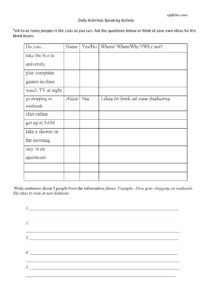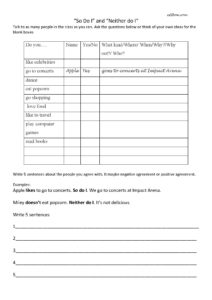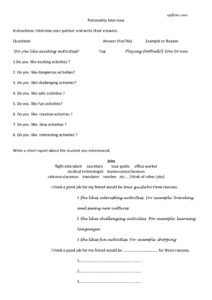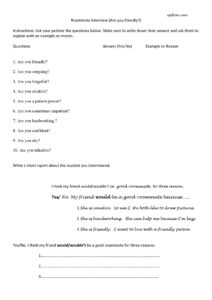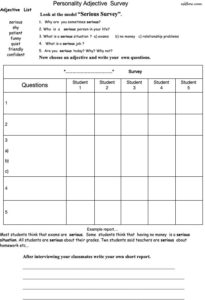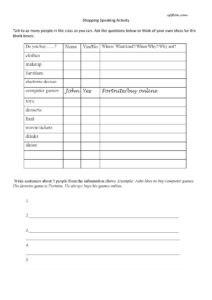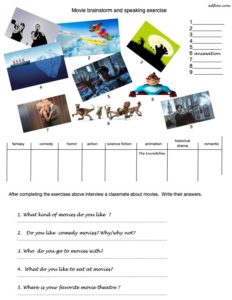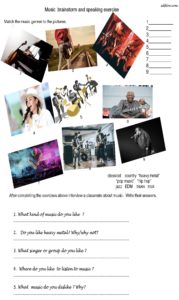23 Really! Practical ESL Classroom or Online Teaching Icebreakers
Updated: January 20th 2024
If you are teaching an ESL language class…..in the classroom or online …it pays to have a good set of icebreakers ready to go ! Just having something ready to go can make all the difference when you walk into a classroom ( sometimes I’m really blank…and it’s actually me that needs the icebreaker!). Or online, having an engaging, accessible way into a topic is essential.
1 Making decisions
If you are teaching language for deciding and choosing, this is a nice way to start.
(download PDF)
Subscribe to get full access to the latest and best resources. There are no ads in the newsletter and you will receive entertaining, high quality, and up-to-date teaching resources regularly. And, if you subscribe, you will be supporting the eslflow website.
2 Gerund brainstorm
This is a good way to get into a discussion about gerunds.
(download PDF)
3 Icebreaker: brainstorming meanings/examples/situations
Another good icebreaker technique is to brainstorm aspects (good, bad etc.) of a particular topic. My topic here is “taking risks”. So I tried to brainstorm many kinds of risks. This is a good icebreaker for adjectives and/or vocabulary associated with safety and danger. (see page 2 for example answers) This exercise can be adapted for any level and could be used 2 or 3 times a term before it comes boring (I think!?).
(Download PDF)
4 Job and career icebreaker/brainstorm
This brainstorm exercise can also be done as preparation for a job interview speaking activity.
(Download PDF)
5 Humor icebreaker
There probably couldn’t be a much easier way to start a class than brainstorming things that make you laugh!
(Download PDF)
6 Are you honest?
An almost failproof icebreaker is the survey. Surveys that relate to students’ personal lives easily engage their attention. It works as a comprehension and short discussion exercise. It’s a great way to introduce topics that relate to honesty.
(Download PDF)
7 Ranking icebreaker:
“What would you do if you won one million dollars?”
Ranking icebreakers are a surefire way to engage students. They can be used for a whole range of topics. One good topic is money and spending preferences.
(Download PDF)
8 Ranking icebreaker:
“Success”
Another good ranking topic is ways to be successful.
(Download PDF)
Related Resources:
8 Essential brainstorming techniques
15 Classroom Debate and Discussion Language and Critical Thinking Activities
10 Essential Opinion and Argument Writing Templates and Worksheets
6 ESL Exercises and Worksheets for Talking about Cities
15 Captivating Computing, Technology and Innovation Vocabulary and Language Exercises
9 First impressions icebreaker (for adjectives or past tense)
This is a fun icebreaker than can be applied to certain topics: describing people, branding (business), the past tense adjectives etc.
(Download PDF)
10 Brainstorming advertising likes/dislikes
This doesn’t look like much but it’s cool! Students’ these days have strong opinions about online advertising and will come up with lots of examples (see the second page of PDF for a sample of student answers).
(Download PDF)
11 Social responsibilities icebreaker (and a student’s answers)
This is a good icebreaker for more advanced students studying social issues. The example shows how it challenges their knowledge of vocabulary.
(Download PDF)
12 First day icebreaker: personal information
“Getting to Know You” is a pretty obvious idea. It’s a personal information exercise and allows the teacher to assess the student’s abilities. The only trouble I’ve had with this exercise is matching the questions to the student’s level of ability. The questions below seem to me to be suitably generic and have worked flawlessly in any elementary class I’ve taught so far (Thai students, Chinese students).
(Download PDF)
13 Brainstorming verbs and basic collocations: icebreaker for present simple and routines
This is another exercise that can be used with a variety of present simple exercises. I can be used to elicit language for making present simple questions or talking about routines. It helps to give the teacher a idea of the range of the students’ vocabulary. And it’s a useful way to get some vocabulary on the board for question writing activities.
(Download PDF)
14 What do you do on Mondays ?: icebreaker for parts of the day/days of the week
This exercise is another great exercise for really elementary students that doesn’t demand too much of them. It’s a good way to get into teaching the days of the week and prepositions.
(Download PDF)
15 Everyday brainstorm: icebreaker daily activities and routines
This brainstorm activity explores vocabulary associated with routines and time. I walk around the class asking students “What do you do everyday in the morning?” , “What do you do once a week?” etc. It’s a nice, friendly way to start a class.
(Download PDF)
16 Circle of frequency: icebreaker for adverbs of frequency
Following on from the previous exercise, this icebreaker can be used used to introduce and familiarize students with verbs adverbs of frequency. You might ask students questions like “What do you sometimes eat at a department store?” or “What do you often do on weekends?”.
(Download PDF)
17 Pictures icebreaker: icebreaker for present continuous, routines and daily activities
For me, activities using pictures are perhaps the most consistently successful of anything I do in the classroom. They can be used in so many ways. They force students to think and use their imaginations. And they are open to interpretation which can often lead to unexpected discoveries about meaning or culture or individual differences.
(Download PDF)
18 Shopping brainstorm word map: icebreaker for talking about shopping
Shopping is a pretty fundamental topic in elementary textbooks. And it’s pretty easy to get students engaged and bring out some vocabulary with the exercise below.
(Download PDF)
Related Resources:
9 Super Elementary Speaking Exercises
5 Elementary Create a Conversation Exercises for Speaking Classes
5 Elementary Conversational Expressions Exercises
5 First Day Activities for an ESL Class
10 Really! Elementary ESL classroom icebreakers
7 Essential Speaking Activities for ESL Classes
12 Great Icebreakers to Start a Class
8 Invitation and Request Dialogues for Everyday Scenarios
19 Types of food: sorting icebreaker for introducing the topic of food
Sorting icebreakers work well for many topics. This is the most elementary and popular icebreaker for introducing the topic of food.
(Download PDF)
20 House and furniture: icebreaker for discussing where you live/your house
Some icebreakers are so simple you might feel a fool for not having thought of them before. I certainly have. Brainstorming things…furniture …items…adjectives ..etc that might be used for parts of the house. What a no-brainer! But I didn’t think of it for 30 years of teaching. Icebreakers like this are great for setting up question writing exercises. Once the board is full of vocabulary, you can give a couple example questions, “What kind of furniture do you have in your living room?/ Do you have a big bed?/ Do you have a microwave in your kitchen etc…..” and ask students to create their own questions around the vocabulary.
(Download PDF)
21 Kinds of jobs brainstorm and icebreaker
Another really straightforward and easy brainstorm is a jobs brainstorm. This works with pretty much any level as even the most elementary students can name jobs. A really, really easy way to start a class.
(Download PDF)
22 Colors and their meanings
Brainstorming about colors is an easy icebreakerl. You could almost use this icebreaker anytime but perhaps it could be good for introducing adjectives or for topics like fashion and advertising.
(Download PDF)
23 Brainstorming places around town
Another useful and east brainstorming and icebreaking activity is brainstorming places around town. Like “Colors” this exercise is painless and usually fun and often leads you down some interesting paths.
(Download PDF)
24 Brainstorming for tourism, travel and culture
This one is interesting and fun.
(download PDF)
